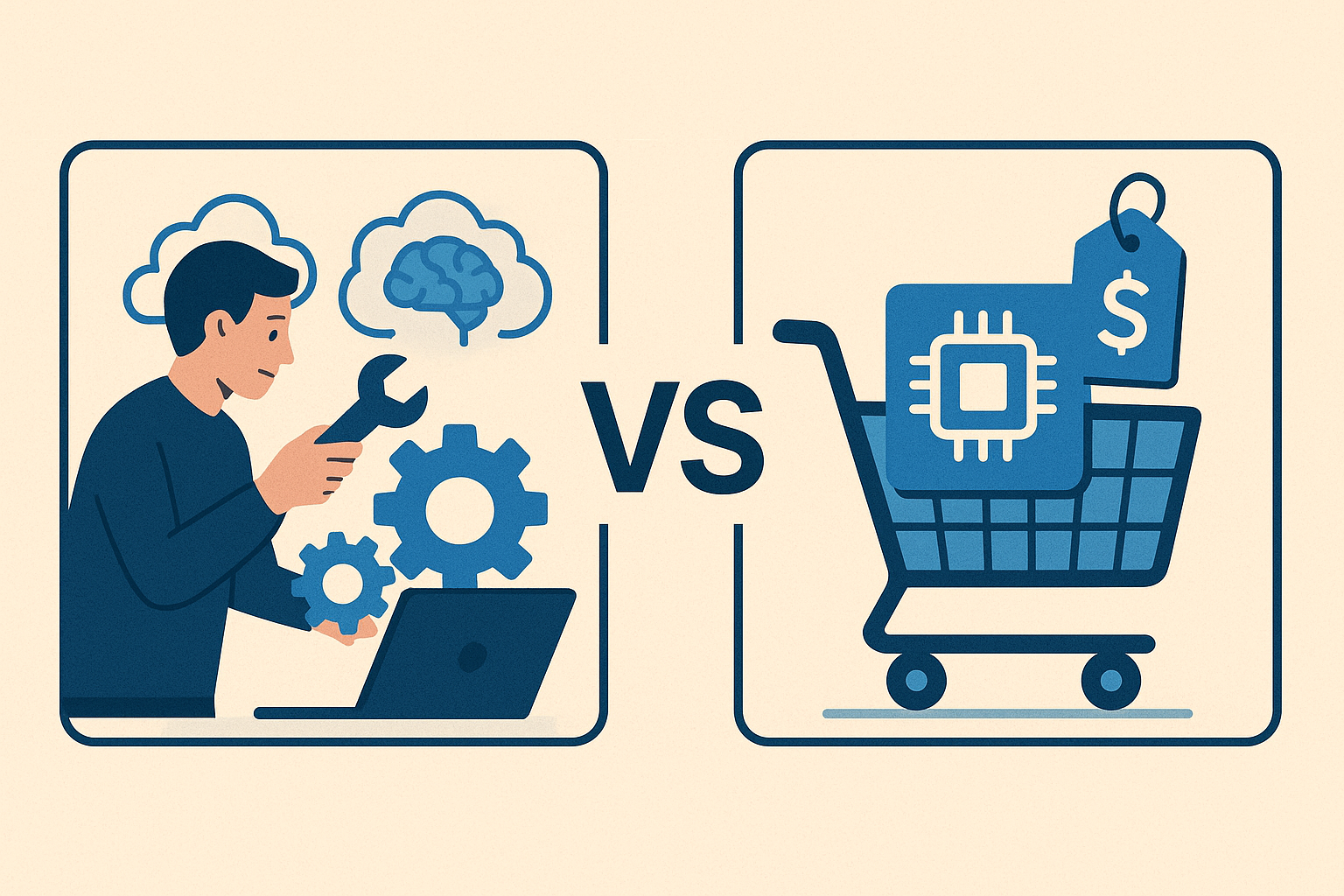More teams than I can count waste months (sometimes years) building custom solutions when a $500/month SaaS product would have worked fine. I’ve also seen teams lock themselves into expensive platforms when a weekend of coding would have given them exactly what they needed.
The “build vs. buy” decision is one of the most consequential calls you’ll make, and most people get it wrong because they focus on the wrong variables. Let me give you a framework that actually works.
Why This Decision Matters
Get this right, and you’re shipping faster, staying flexible, and keeping costs reasonable. Get it wrong, and you’re either:
- Burning engineering time on undifferentiated work, or
- Paying expensive subscription fees for features you don’t need, or
- Locked into a platform that can’t do what you actually need
The Decision Framework
Here’s how to actually think through this:
Factor 1: Is This Core to Your Business?
Build if:
- This capability differentiates you from competitors
- It’s directly tied to revenue generation
- Your specific requirements give you a competitive advantage
Buy if:
- It’s table stakes functionality
- Every company needs this
- There’s no competitive advantage in how you do it
Examples:
Build: Netflix’s recommendation engine (core business differentiator)
Buy: Your expense tracking system (nobody cares how you do this)
Build: Uber’s ride matching algorithm (their secret sauce)
Buy: Their data warehouse platform (Snowflake works fine)
Factor 2: Total Cost of Ownership
This is where people screw up. They compare the SaaS subscription price to the engineering time to build it. Wrong calculation.
Real cost of building:
- Initial development time (always 2-3x your estimate)
- Ongoing maintenance and bug fixes (20-30% of a developer’s time)
- Feature development to keep pace with competitors
- Infrastructure costs
- Monitoring and on-call overhead
- Security patches and updates
- Documentation and training
- Cost of switching later if you change your mind
Real cost of buying:
- Subscription fees (which usually increase annually)
- Integration time
- Training and change management
- Feature gaps requiring workarounds
- Vendor lock-in risk
- Migration costs if you switch vendors
Let’s do the math on a real example:
Scenario: You need a data catalog solution.
Build Option:
- Initial build: 3 engineers × 3 months = 9 engineer-months
- Annual maintenance: 1 engineer × 40% time = 0.4 engineer-years
- Infrastructure: $2K/month = $24K/year
- At $150K fully-loaded per engineer-year:
- Year 1: $1.35M + $60K + $24K = $1.434M
- Year 2: $60K + $24K = $84K
- Year 3: $60K + $24K = $84K
- 3-year total: $1.602M
Buy Option:
- Enterprise catalog platform: $50K/year
- Integration and setup: $30K (one-time)
- Training: $10K (one-time)
- 3-year total: $190K
Even accounting for annual price increases, buying is 8x cheaper over three years. And you get enterprise features, support, and continuous updates.
Factor 3: Maintenance Burden
People dramatically underestimate maintenance costs. Here’s what “maintaining” a custom solution actually means:
- Keeping dependencies updated
- Fixing bugs as they’re discovered
- Updating documentation
- Training new team members
- Handling security vulnerabilities
- Scaling infrastructure as usage grows
- Adding features to match evolving needs
- Dealing with upstream API changes
Rule of thumb: For every month spent building, plan for 2-4 hours per month of ongoing maintenance. That’s minimum. Complex systems can require 20-40% of a developer’s ongoing time.
Factor 4: Flexibility and Control
Build gives you:
- Complete control over features and timeline
- Ability to optimize for your specific use case
- No vendor dependencies
- Freedom to change direction quickly
Buy gives you:
- Professional support and SLAs
- Regular feature updates
- Proven reliability and scale
- Integration with other tools in ecosystem
The key question: Do you actually need that control? Or are you overengineering?
Most teams overvalue control and undervalue “it just works.”
The Decision Matrix
Here’s a simple matrix to guide your decision:
| Core to Business? | Unique Requirements? | Build/Buy? |
|---|---|---|
| Yes | Yes | Build |
| Yes | No | Buy or Build (50/50) |
| No | Yes | Build if cheap, else Buy |
| No | No | Buy |
Decision Checklist
Use this checklist for every build vs. buy decision:
Build if:
- This is core to your competitive advantage
- Vendor solutions genuinely can’t meet your needs
- You have engineering capacity to maintain long-term
- The total cost of ownership is favorable
- You need specific control or customization
Buy if:
- This is table stakes functionality
- Good vendor solutions exist
- You need fast time to value
- Your team is small or stretched
- The math favors buying (do the TCO calculation)
The Bottom Line
Build when it’s core to your business and you have the capacity to maintain it long-term. Buy when good solutions exist and you need to move fast. Hybrid when you can use standard tools as a foundation.
Most importantly: do the math. Total cost of ownership over 3 years should guide your decision more than philosophical preferences about building vs. buying.
The best engineering teams aren’t the ones who build everything themselves. They’re the ones who make smart decisions about what to build, what to buy, and what to skip entirely.
And remember: today’s build decision is tomorrow’s maintenance burden. Choose wisely.
